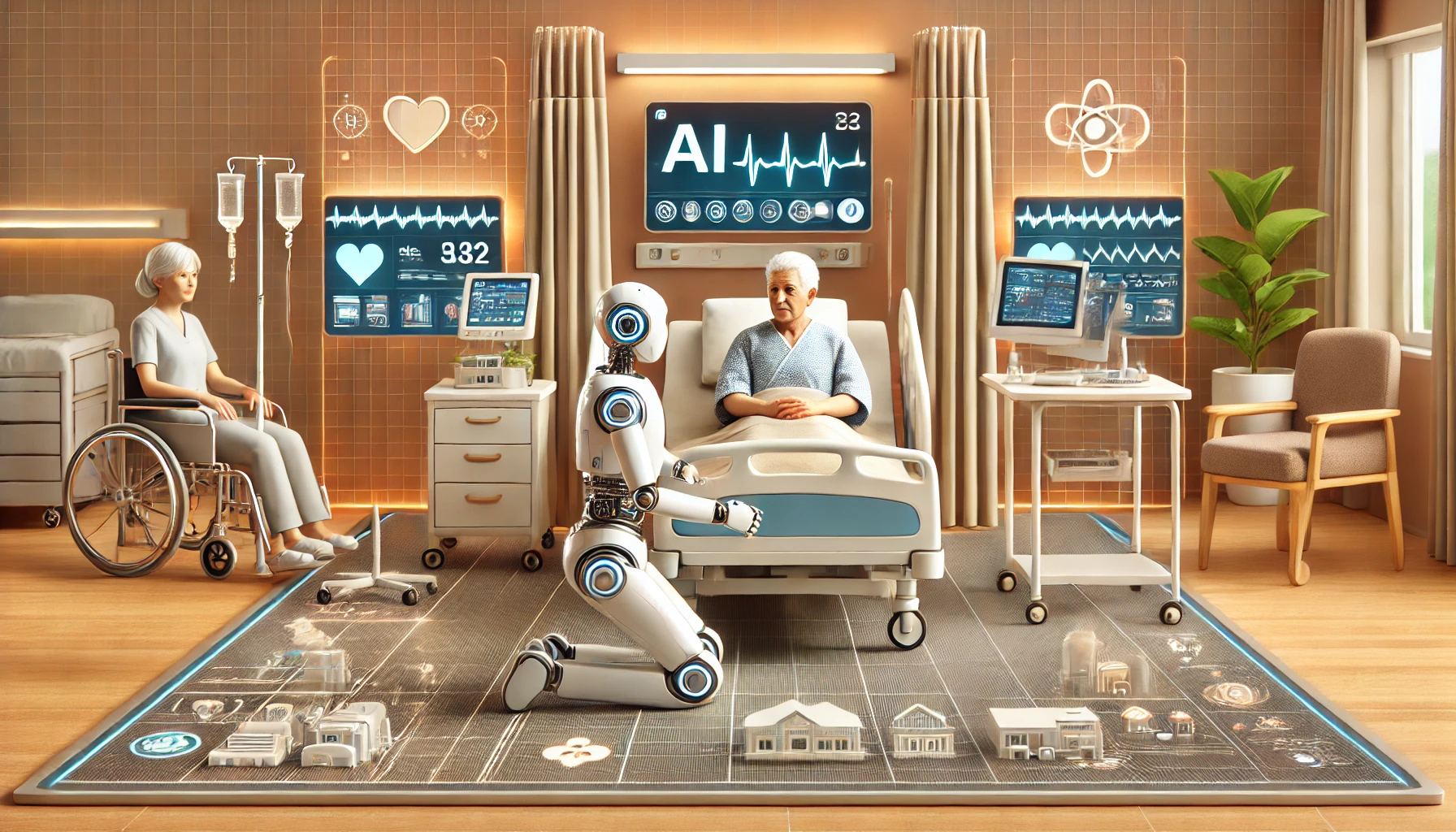Nursing Care Robots in Japan: Robotics and AI Are Revolutionizing Nursing Care in Japan
Nursing Care Robots in Japan: Japan is at the forefront of technology-driven solutions for elderly care, where the challenge of an aging population is met with innovative tools like nursing care robots, AI-powered devices, and smart monitoring systems. With one of the highest percentages of elderly people in the world, Japan has turned to high-tech nursing care solutions to ensure quality support for both patients and caregivers.
In this blog, we’ll explore how Japan’s nursing care technology is evolving, focusing on robotic solutions such as HAL and PARO therapeutic robots, smart nursing beds, and AI-driven monitoring devices. Let’s take a closer look at how these innovations are shaping the future of healthcare.
Nursing Care Robots in Japan: A New Frontier
One of the key innovations in Japan’s high-tech nursing care is the use of nursing care robots. These robots assist caregivers in daily tasks, reduce physical strain, and provide emotional comfort to elderly patients.
The Rise of Caregiver Robots in Japan
Japan has long been a leader in robotics, and the country’s healthcare system has embraced these technologies to assist with its aging population. Caregiver robots in Japan are designed to help with physically demanding tasks such as lifting patients, assisting with mobility, and even offering companionship.
One prominent example is the Robot Suit HAL (Hybrid Assistive Limb). HAL is a powered exoskeleton that helps individuals with mobility impairments regain strength by augmenting their physical abilities. Caregivers also use HAL to assist elderly patients in nursing homes, providing a crucial solution for lifting and transferring patients safely.
Nursing care robots not only alleviate the physical burden on human caregivers but also ensure a more dignified care experience for patients. These robots are designed with human needs in mind, creating a seamless interaction between human and machine.
AI in Nursing Care: Smart Technology for Better Health
Beyond robotics, AI in nursing care has become a game-changer in Japan. Artificial intelligence enhances care by making predictions, improving safety, and monitoring elderly patients around the clock.
AI-Powered Solutions for Elderly Care
AI in nursing care enables the collection and analysis of massive amounts of data to predict healthcare needs and prevent accidents. For instance, AI can monitor a patient’s daily activities and detect any sudden changes in health, such as an increase in fall risk or a sudden drop in vital signs. This allows caregivers to respond proactively and prevent emergencies.
Smart monitoring devices are commonly used in nursing homes, tracking health metrics like heart rate, blood pressure, and movement. These devices send real-time updates to caregivers, ensuring that any abnormalities are quickly addressed. One popular example of smart monitoring in elderly care is Japan’s AI-powered beds, which monitor patients’ movements and automatically adjust the bed to prevent falls.
Therapeutic Robots: PARO and the Emotional Side of Care
Not all robots are designed for physical tasks—some are created to provide comfort. The PARO therapeutic robot, shaped like a baby seal, is widely used in Japan to support patients with dementia and Alzheimer’s disease.
The Benefits of PARO in Elderly Care
The PARO therapeutic robot is designed to stimulate cognitive functions and reduce anxiety in elderly patients. Its sensors respond to touch, light, sound, and temperature, creating a lifelike interaction. When patients pet PARO, it moves, makes soft sounds, and responds positively to gentle strokes, much like a real pet.
Studies show that therapeutic robots like PARO help reduce stress and loneliness in elderly patients, improving their overall well-being. This type of robotic assistive device in elderly care offers an emotional connection that can significantly improve mental health, particularly in long-term care facilities.
High-Tech Nursing Beds: Safety and Comfort
Japan’s high-tech nursing beds are another cornerstone of modern elder care, offering increased safety and convenience for both caregivers and patients.
How High-Tech Beds Support Caregiving
High-tech nursing beds in Japan are equipped with features like automatic height adjustment, mobility assistance, and built-in monitoring devices. These beds help patients move more easily, reducing the risk of falls, and also provide caregivers with better access during routine tasks like dressing, bathing, and feeding.
Additionally, some beds are integrated with AI to predict patient movements and adjust the bed position to prevent accidents. This ensures both comfort and safety for patients, making it easier for them to stay independent for as long as possible.
Aging Population Technology in Japan: A Holistic Approach
With more than 28% of its population aged 65 or older, Japan is actively pursuing technology solutions to address the demands of its rapidly aging society. Aging population technology in Japan includes everything from AI-driven tools to robotic caregivers, offering holistic care that addresses both physical and emotional needs.
Future Innovations in Elder Care Technology
Looking ahead, Japan is investing heavily in new technologies that will make elder care even more efficient. Companies are developing wearable devices that monitor patients’ vital signs continuously, alerting caregivers to any health changes instantly. Additionally, smart homes equipped with AI-powered sensors and robots will soon become a standard solution for elderly care, enabling seniors to live independently while still receiving comprehensive care.
How High-Tech Nursing Care in Japan is Shaping the Future
Japan is leading the way in high-tech nursing care with innovations like nursing care robots, AI-driven solutions, and therapeutic devices like PARO. From assisting with physical tasks to providing emotional support, these technologies are making elderly care safer, more efficient, and more humane.
With smart monitoring devices, robotic assistive devices, and high-tech nursing beds, Japan’s approach to healthcare ensures that its aging population is well-cared for, both physically and emotionally. As the global population ages, other countries may look to Japan’s solutions as a model for the future of elderly care.
To learn more about how technology is revolutionizing healthcare, explore more at Regent Studies.
For additional insights into the latest elder care technology trends, check out this report on robotic care in Japan (Tokyoesque – Globally Aware & Curious).




